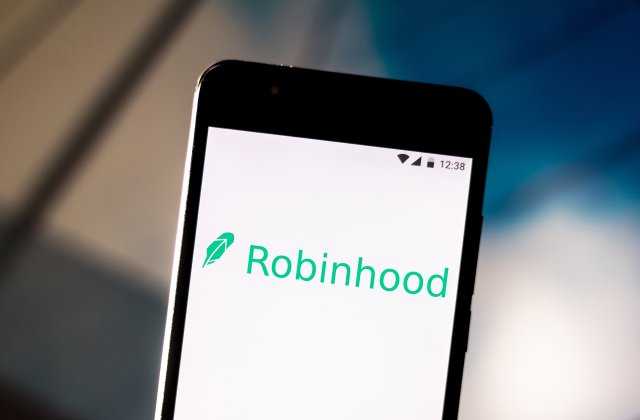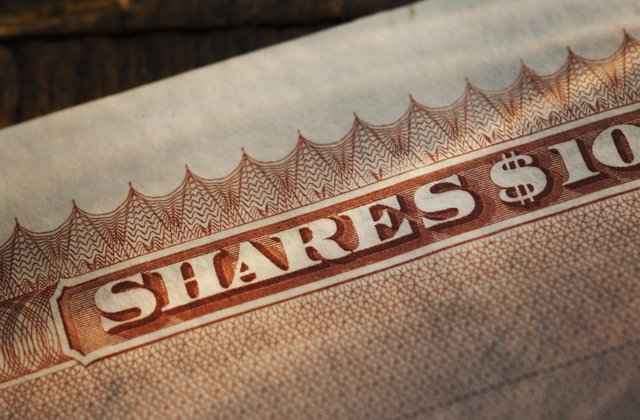
When Robinhood launched five years ago with $3 million of venture capital, few people thought the startup would fundamentally change the financial services industry as we know it. But fast-forward to today and the stock-trading app , which has no account minimums or trading fees, has put three brokers worth a combined $80 billion on the defensive.
Perhaps industry leaders should have seen it coming when the service debuted to ravenous applause; more than 100,000 people signed up for the app in under a month. The users kept coming in droves, and by 2018 the platform had surpassed E-Trade (ticker: ETFC ), reaching 4 million brokerage accounts.
See:
The app now has more than 6 million users and has raised over $860 million in funding. Its most recent round was a $323 million Series E that valued the company at $7.6 billion.
In the fall of 2019, E-Trade, along with peers TD Ameritrade ( AMTD ) and Charles Schwab ( SCHW ) finally bit their lip and started offering free stock trading as well.
Unfortunately, you don’t surpass E-Trade in users without the heavyweights noticing. Robinhood, the young fintech startup that seemingly emerged from the ether, has turned the online brokerage industry on its head.
And while a trio of its biggest competitors deciding to compete on price might sound like a death knell, Robinhood doesn’t look like it’s done disrupting.
What Robinhood Did Right
For nearly 200 years, brokers charged fixed-rate commissions to retail investors; as recently as the 1970s a single trade could cost hundreds of dollars.
The SEC ended that in 1975, and brokerages offering $70 trades became cutting edge. Commissions steadily ebbed over time, with online brokers pushing costs below $20 in the 1990s.
By 2014, the cheapest online brokers were still charging $5 to $8 a trade. Robinhood showed that even that was essentially gouging, and that year the company pushed the trend in trading costs to its theoretical limit: zero.
It was a radical business model, and Robinhood married that unprecedented concept with a sleek, easy-to-navigate mobile app and actually built in a social aspect to investing. It incentivized users to invite friends and family, offering a free stock – usually a cheap stock like Ford Motor Co. ( F ) – for each invitee that funded a Robinhood account.
The features went further, as crypto trading , margin buying and importantly, no account minimums attracted millions of users, mostly millennials. The referral program really helped to limit customer acquisition costs, and once those customers got there, Robinhood made investing frictionless, cheap and accessible.
How Robinhood Disrupted the Industry
Five years and more than 6 million users later, the retail brokerage business finally acknowledged the enormous power Robinhood had incrementally amassed in remarkably little time. On top of that, other fintech startups began emulating Robinhood’s model, and a parallel revolution was going on in the world of exchange-traded funds, as ETFs without expense ratios began popping up in 2018.
Eventually, one of these straws broke the camel’s back. It was time for the status quo to adapt.
“The bigger boys on the block will not allow something as small as a price cut on trades to disrupt their overall business model – there are plenty of ways to make up that revenue,” says Jay Sharifi, founder and investment advisor with Legacy Wealth Management.
“The larger and older custodians like TD Ameritrade, Charles Schwab, and E-Trade will make this transition effortlessly,” Sharifi says. “This is an industry shifting toward RIAs and employer-sponsored plans becoming the predominant pathway for new business to flow into a custodian.”
This Is a Defining Moment for Online Brokers
Either way the cookie crumbles, this is do or die time for online brokers of all shapes and sizes. Public or private, new school or old school, the industry is changing and tomorrow’s dominant custodians are being forged in the ultra-competitive kiln of modern markets.
It’s an inflection point. And experts are of two minds about how things will go from here.
Option #1: The industry will demolish Robinhood. Five-year-old Robinhood just hasn’t had the time to build up the brand, trust and customer loyalty that E-Trade (founded 1982), TD Ameritrade (1971) and Charles Schwab (also 1971) have. So the theory goes.
See:
Also, Robinhood is still private – perhaps to insiders’ pleasure given the recent spate of IPO delays – so its financials can’t be compared to its older-school public rivals. But from valuation alone, it’s clear that Robinhood is dwarfed in size.
Here are the most recent valuations:
Robinhood: $7.6 billion
E-Trade: $9.7 billion
TD Ameritrade: $19.5 billion
Charles Schwab: $50.4 billion
Divining Robinhood’s revenue would be more useful, and requires some back-of-the-napkin estimations.
Since Robinhood is a high-growth Silicon Valley-backed “unicorn” and the latter three are boring retail brokers, there’s no doubt Robinhood trades at a much higher price-sales ratio than the major public brokerages.
A price-sales ratio of 15 might be too conservative, but assuming that, Robinhood would be doing just over $500 million in annual revenue. Revenues at its larger competitors run between $3 billion and $12 billion annually. Unfortunately, resources matter.
“Other firms that are much better entrenched as custodians and have name recognition and history will come out on top,” Sharifi says. “I believe the larger custodians will outlast institutions like Robinhood.”
“I do not believe it’s a good long-term strategy to solely rely on (price) as your competitive edge; it can be profitable in the short term and it may pick up steam, but will not last long.”
From this perspective, it’s Robinhood that now must answer for the great equalizer just pulled off by the major online retail brokerages.
“It will be interesting to see how Robinhood changes their stance now that the other big online brokerages have started to offer zero commission trading,” says Ryan Peckham, assistant professor at University of Texas - Permian Basin.
Option #2: Robinhood is the future and stalwarts will be collateral damage. While the transition to commission-free trading may have been, as Sharifi says, “effortless,” for the traditional online brokers, it was objectively painful for them as well.
On Oct. 1, the day Charles Schwab did away with online commissions, SCHW stock fell 10%; TD Ameritrade shares fell 26% and E-Trade took a 16% haircut. Within a day, the latter two brokers announced that they too would be offering commission-free online trades.
While this levels the playing field with Robinhood from a price perspective, Robinhood is the net winner here, forcing the hand of three competitors worth a combined $80 billion.
Robinhood was built for this business model. Its publicly traded competitors were not. “The traditional brokers will be subject to layoffs and ultimately a reduced customer experience, while the disrupters will be able to offer more unique and enhanced services,” says Anthony Denier, CEO of Webull, a commission-free trading platform.
Denier offers up Robinhood’s recently announced service called “Cash Management,” an account yielding just over 2% that you can use a no-fee debit card with. Due to their cost structures, such features “will be near impossible for the traditional brokers to compete with,” Denier says.
What's Next For Online Brokers?
While Robinhood’s free stock and options trading were revolutionary just five years ago, today that’s becoming status quo.
But the focus on free trading overlooks the other extremely important differentiators that made Robinhood a success. The streamlined five-minute signup process, no account minimums, the sleek app, the social nature of it, crypto trading, after-hours trading, the new high-yield cash accounts – Robinhood was building out these customer-centric features while industry mainstays were trying to maintain their oligopolistic, fee-heavy structures.
Sure, buying and selling stocks for free is no longer the quickest way to explain Robinhood’s unique value proposition. But slashing prices is merely the easiest way to mimic Robinhood’s popular investor-focused offerings. What’s next for the bigwigs? How far will they go to steal some of Robinhood’s momentum and retain their market share?
The answer, for Denier, is simple.
See:
“The industry will now have to shift to offer better trading technology, tools and an overall customer experience.”
The big shots are playing by Robinhood’s rules now. If the 2014 startup hadn't boldly taken the risks it did, millions of investors might still be paying $5 to $8 a trade. But David didn't beat Goliath by playing him at his own game.
7 Best Investment Websites for Beginners

Compare Offers
Compare Offers



Post a Comment